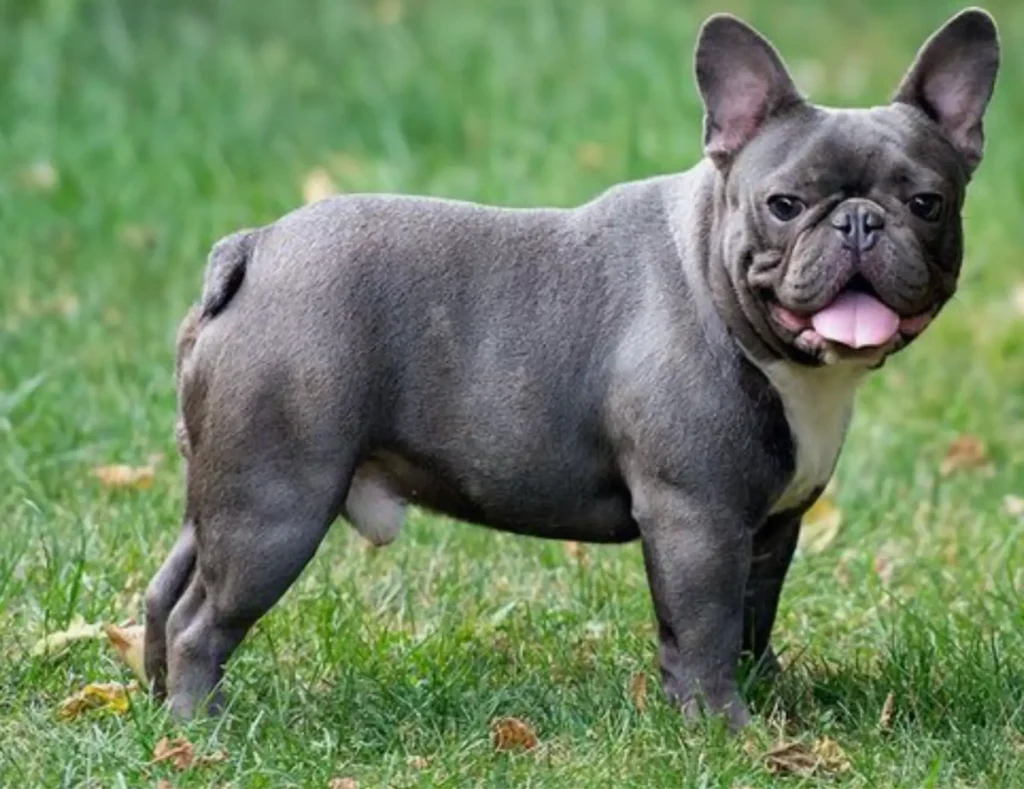
Description
Blue Frenchies are petite, stout dogs with distinctively wrinkled features and short, smooth coats. They have a large chest, thick, muscular legs, and a stocky physique. Their ears are big and rounded, standing upright, and their tails are often short and straight. The most distinguishing physical traits of Blue Frenchies include the following.
The short, glossy coat of a blue frenchie is simple to maintain. Although blue fawn or blue brindle are also possible, their coat is normally some shade of blue. The coat is dense and silky, and it sheds sparingly.
Origin
The French Bulldog breed, which was created in France in the 19th century, is the ancestor of the Blue French Bulldog. Frenchies were originally intended to be bull baiting dogs, but wealthy French society gradually adopted them as companion animals.
The breed was brought to England and the United States in the late 1800s, and they immediately became well-liked by both the affluent and common people. Frenchies have evolved into one of the most well-liked breeds in the world, and their appeal is only increasing.
Gene for Coat Color
The black dilution gene (D gene), often known as the dilution gene or the ‘black’ gene, is a recessive trait that gives rise to the blueish coat of the blue French Bulldog. The magnificent bluish grey coat of the blue French bull dog is a result of the black dilution gene.
Temperament
The friendly and lively nature of Blue Frenchies is one of the breed’s many appeals. These dogs are renowned for being sociable and amiable, and they frequently get along well with kids and other animals.
They are also quite flexible and may live well in a number of settings, including farms, residences, and even apartments. High intelligence and trainability are two further qualities of blue frenchies.
As Pet

Care Requirements
Low-maintenance and simple to care for, blue frenchies are a popular breed. They need routine grooming to maintain healthy, clean coats, and they need routine exercise to stay physically active.
These dogs should have routine veterinary treatment because they are prone to specific health issues, such as respiratory issues and skin allergies. In addition, Blue Frenchies are prone to obesity, so it’s crucial to watch what they eat and how much they exercise.
Training
Highly intelligent, and frequently simple to teach, blue frenchies. They pick things up quickly and are responsive to training techniques that include positive reinforcement.
All Blue Frenchies should get fundamental obedience training, as well as instruction in fundamental commands like “come,” “sit,” and “stay.” Training in socialisation is particularly crucial because these dogs are very sociable and like to interact with both people and other dogs.
Feeding
Blue Frenchies have a voracious appetite, and if their food consumption is not strictly regulated, they may be susceptible to obesity. These dogs thrive on a diet of premium dog food, and it is crucial to measure their meals to make sure they are consuming the recommended daily servings.
Treats should only be offered occasionally because they can cause weight gain. It’s also critical to always have fresh water available for Blue Frenchies.
Table





